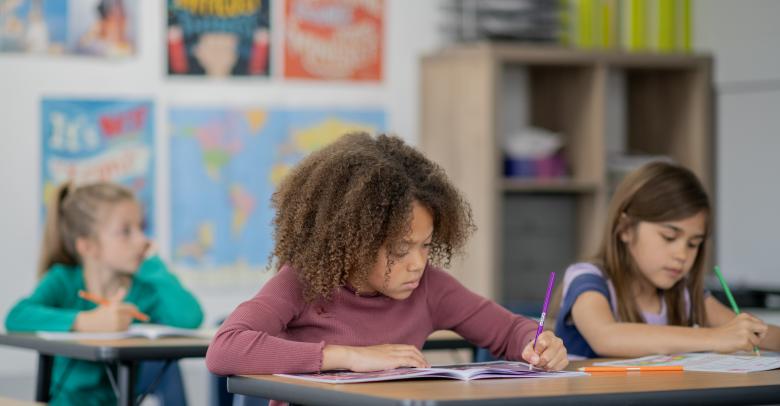Encouraging infants and toddlers to engage in sensory play doesn’t mean having to spend money on specific supplies or expensive toys. Many simple, everyday items can be used to create valuable sensory experiences that your youngest learners will enjoy.
4 DIY Ideas for Sensory Play with Infants & Toddlers
Check out these easy do-it-yourself activities to engage your youngest learners while supporting healthy sensory development, too!
1. Textures and Tastes:
Playing with food is a great way for infants and toddlers to safely experience different textures and occasionally tastes, as we know that children also learn by putting objects in their mouths.
Safety always comes first, so make sure no child has an allergy to foods used in the classroom, and start with a safe and clean surface to place food on. You’ll find the Jack Richeson Neatness Mat Set, Disposable Bibs, and Vinyl Smocks very handy for easy clean-up when you’re finished.
Infants can explore with soft-textured items such as Jello formed in food-approved molds, colored ice-cubes made in ice-cube trays, whipped cream, and cooked spaghetti squash. Place a dollop of food on the mat, and let the child swirl and squeeze the food between their fingers.
Add a textured cereal for additional and opposite sensations. Toddlers will enjoy similar tactile experiences with food, such as long carrot peelings, cooked strands of green-colored pasta, and blue frosting. Add plastic sea creature manipulatives to the mix, and watch children create an imaginative underwater scene for playing and sensing.
2. Sizes and Shapes:
Textured food is a great resource for creating unique touch experiences. Start by choosing different-sized and shaped uncooked food such as rice, cereals, and pastas. Consider adding food-coloring to make play more interesting.
Place a variety of items on a piece of rounded, clear contact paper and cover it with another piece of the same size. Make sure the edges are secure. Children will enjoy feeling the different shapes through the paper. Small unique objects other than food will work well, too. Have fun exploring together.
3. Sounds & Sensory Boards:
Sensory Boards are a great way for both infants and toddlers to explore with their hands and ears. Create your own by choosing a strong surface such as cardboard or tagboard. Next, choose realistic items that are interesting to the touch and ones that make noise. Any item is fine as long as it’s safe for little fingers. Glue them securely to the board, and hang it in a prominent place to let your little learners explore.
You can even create themed sensory boards based on what you’re teaching, such as seasons or animals. Be creative knowing you’re opening up a world of learning to your children.
More Sensory Activity Ideas for Early Childhood Learners
The first five years in a child’s life are incredibly important, and the right educational experiences can help set them up for future success. Give the youngest learners opportunities to play and explore with more great sensory activities:
Read More: Indoor Sensory Play & Activities for Infants and Toddlers







Leave a Reply